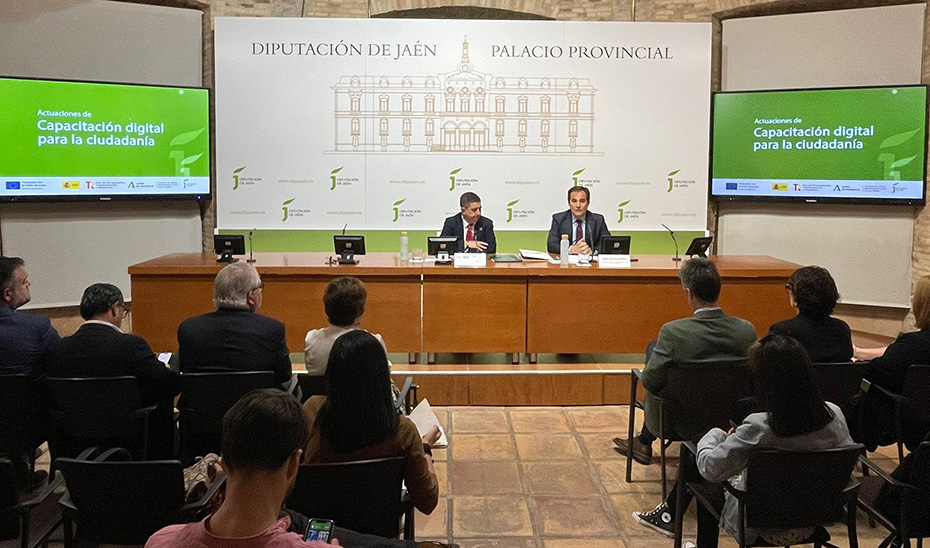-
Más de 7.000 vecinos del mundo rural de Jaén podrán acceder a cursos para reducir la brecha digital

El consejero de Justicia, Administración Local y Función Pública, José Antonio Nieto, y el presidente de la Diputación de Jaén, Francisco Reyes, han defendido la importancia de generar oportunidades en el medio rural para evitar la despoblación y ello requiere formar a los vecinos en capacidades para desenvolverse en el mundo digital. Para ello, ambas…
-
La columna de traspasos de Matteo Moretto: Guido Rodríguez, Arda Guler, Atlético de Madrid y Ronald Araujo

Matteo Moretto ofrece a Football España información exclusiva sobre los últimos acuerdos que dominan los titulares en España, como se revela en Información diaria de Fabrizio Romano. Lo que puedo decir es que por el momento no hay negociaciones en marcha. Sus agentes y el Bayern de Múnich hablaron y negociaron mucho durante el mes…
-
Un club italian din Serie A l-ar putea primi pe Nacho cu brațele deschise – Știri din Spania

Una dintre marile figuri ale îndelungatei suferințe a triumfului lui Real Madrid în timpul vizitei pe stadionul Etihad, În manșa secundă a sferturilor Ligii Campionilor, a fost Nacho Fernández. Fundașul cu experiență s-a combinat cu Antonio Rüdiger pentru a oferi o adevărată demonstrație de forță defensivă, dar și inteligență și sacrificiu împotriva lui Manchester City.…
-
Obțineți mostre gratuite de la Ordesa – Cadouri și mostre gratuite – Știri de agrement

Înscrie-te la discuția din 29 mai, Discuții despre moașă și primiți cadou un pachet cu două plicuri Ordesa. În total, vor fi dăruite 4.000 de plicuri. Nu rata noul discurs online „Cele mai frecvente probleme în hrănirea nou-născuților: gaze, colici, reflux…”, unde pe lângă învățare, vei primi și un cadou pentru bebelușul tău. În cadrul…
-
Obțineți mostre gratuite de la Ordesa – Cadouri și mostre gratuite – Știri de agrement

Înscrie-te la discuția din 29 mai, Discuții despre moașă și primiți cadou un pachet cu două plicuri Ordesa. În total, vor fi dăruite 4.000 de plicuri. Nu rata noul discurs online „Cele mai frecvente probleme în hrănirea nou-născuților: gaze, colici, reflux…”, unde pe lângă învățare, vei primi și un cadou pentru bebelușul tău. În cadrul…
-
Experimente stiintifice cu efectele muzicii asupra mintii umane
Experimentele științifice cu efectele muzicii asupra minții umane au captat mereu atenția cercetătorilor din întreaga lume. Muzica este un element omniprezent în viețile noastre, fiind folosită în cele mai diverse scopuri – de la distracție și relaxare până la terapie și creștere personală. În ultimele decenii, studiile științifice au început să dezvăluie o serie de…
-
Aún no hay respuesta de Kona Bicycles, ya que el futuro de la marca es la comidilla de Sea Otter

¡Apoyanos! Bikerumor puede ganar una pequeña comisión por los enlaces de afiliados de este artículo. Aprende más Sea Otter está en pleno apogeo y hay una lote de marcas presentes. Pero es la marca que no está presente la que genera más revuelo. Después de aparecer en el lugar y montar su carpa, Kona Bicycles…
-
Brenton Thwaites ducha desnuda y videos sexys

Brenton Thwaites escena desnuda y en ropa interior en Conocí a una chica (2020) ¡AQUÍ ESTÁN LAS FOTOS DEL PENE DESNUDO FILTRADAS DE BRENTON THWAITES! Compartir este: Haga clic para compartir en X (Se abre en una ventana nueva) Haz clic para compartir en Facebook (Se abre en una ventana nueva) Haga clic para compartir…
-
Senzoku y Takinaga “Licorice Recoil” de nuevo diseño con diseño botánico ♪ Los productos “Botania series” ya están disponibles

Senzoku y Takinaga “Licorice Recoil” de nuevo diseño con diseño botánico ♪ Los productos “Botania series” ya están disponibles Contenido original en Inglés
-
#3,116 – Semana de la IA: avances conceptuales

#3,116 – Semana de la IA: avances conceptuales 20 de abril de 2024 por Craig Shames ¿Quién debería ser? el próximo james bond? ¿Aaron Taylor-Johnson? ¿Idris Elba? ¿Alguien más? ¿Y Henry Cavill? Si te inclinas por Superman, un reciente avance conceptual con IA lo tiene cubierto. Como futurismo lo dice: “Tergiversado como “Bond 26 –…
